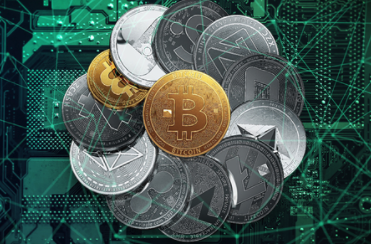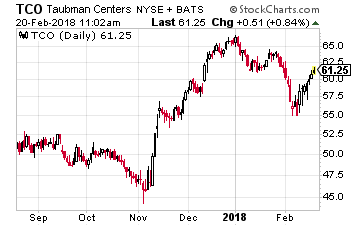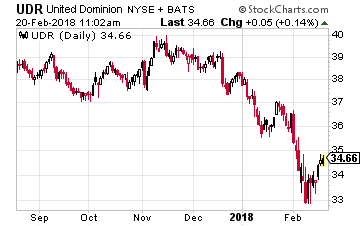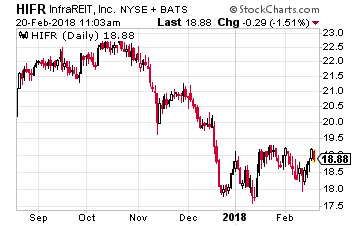Sometimes it feels like we’re living in a sci-fi movie.
Governments vs. hackers. Digital currency. And now, government-issued digital currency.
Venezuela has officially launched the presale of its “petro” cryptocurrency. According to the government, more than $735 million has been raised in the presale in just 20 hours. (I wonder how that compares with the country’s last bond sale…)
Venezuela plans to issue 100 million tokens in total, each backed by a barrel of oil. The starting price for each token is $60, and the presale ends March 19.
Apparently, the coins will be used to purchase deliverable oil from state-owned companies. The country also says that citizens who use the coin to pay taxes will get a 10% discount.
I’m very curious as to who’s buying these early tokens. Is it industrials that plan to actually use them for oil purchases? Venezuelan citizens who are sick of hyperinflation wiping away their savings? Neighboring countries that trade with Venezuela?
By the way, the U.S. Treasury has issued a statement saying that Americans should not participate, as it would probably violate sanctions against Venezuela.
Hinting at Crypto’s Potential
We don’t know if the Venezuela experiment will work. It certainly could because people who have suffered through horrific inflation tend to seek out alternatives: gold, silver, real estate… and now cryptocurrencies.
A government-backed digital currency could be attractive to both companies and people, especially when compared with the old, hyperinflated, nearly worthless currency, the bolivar. So even though the government has a bad financial record, local citizens, at least, may be willing to overlook it.
However, this is the first time a centralized power has released a cryptocurrency. It could go horribly wrong, in many ways.
We don’t know if they plan to “fix” the price of the petro to the price of oil, for example. That would take some serious engineering since there may be more demand than supply, or vice versa.
What if people start using the petro for everyday things? Do they plan to let the price rise far above the price of a barrel of oil, if demand is there? If each petro is worth $120, does it buy you two barrels?
We’ll know the answers to these questions soon enough. But the interesting thing about this story is how it demonstrates what crypto can do.
In the next few years, more countries, local governments and companies will begin issuing tokens or coins.
Let’s look at a hypothetical example. A city needs to finance a new toll bridge. They could use a platform like Ethereum to issue a token for that purpose.
There would be a “smart contract” that automatically shares a predetermined percentage of toll revenue with owners (once it’s operating). The tokens would trade freely on exchanges and find price equilibrium at a yield that investors are comfortable with.
Traditionally, the city would raise this money by issuing municipal bonds. Only institutional investors participate in these deals, so locals are left out in the cold.
But if they used a token or coin instead, they would get three major benefits:
Far more liquidity
Participation from small, non-institutional investors (aka 99% of all investors)
Efficient distribution of revenue with smart contracts on the blockchain.
It’s also a lot easier to store a token than it is a bond. Anyone can do it. And you don’t have to trust a bank or money manager to hold your money for you.
The toll bridge is just one example of how blockchains have the potential to transform the financial world.
There will also be equity tokens soon. They will be very similar to cryptocurrency but will represent shares in the company.
We’re already starting to see some amazing applications of blockchain technology. But if this were the internet, I’d say we’d be in about 1993. This is the very early adopter phase.
Over the coming years, we’re going to see some amazing technologies emerge.
The best part is almost anyone can participate in this blockchain revolution.
Good investing,
Adam Sharp
Co-Founder, Early Investing
Can a $10 Bill Really Fund Your Retirement? The digital currency markets are delivering profits unlike anything we’ve ever seen. 23 recently doubled in a single week. And some like DubaiCoin have jumped as much as 8,200X in value in 18 months. It’ unprecedented... but you won’t receive any of the rewards unless you put a little money in the game. Find out how $10 could make you rich HERE.
Source: Early Investing


 Taubman Centers, Inc. (NYSE: TCO) acquires, develops, owns and operates regional and super-regional shopping centers. The company has grown its dividend by a 6% annual compound growth rate for the last 10 years. The payout rate was boosted by 5.0% last year. Despite a challenging retail environment in 2017, the company was able to generate growth in all its key financial metrics.
Taubman Centers, Inc. (NYSE: TCO) acquires, develops, owns and operates regional and super-regional shopping centers. The company has grown its dividend by a 6% annual compound growth rate for the last 10 years. The payout rate was boosted by 5.0% last year. Despite a challenging retail environment in 2017, the company was able to generate growth in all its key financial metrics. UDR, Inc. (NYSE: UDR) owns and operates multi-family apartment complexes. The company increased its dividend by 5.1% last year and has averaged annual dividend growth of 7.1% over the last five years. Adjusted FFO per share was up 5.5% for 2017.
UDR, Inc. (NYSE: UDR) owns and operates multi-family apartment complexes. The company increased its dividend by 5.1% last year and has averaged annual dividend growth of 7.1% over the last five years. Adjusted FFO per share was up 5.5% for 2017. InfraREIT Inc. (NYSE: HIFR) is a REIT that owns electric power transmission and distribution assets in Texas. The company came to market with a January 2015 IPO. After its first year, the HIFR dividend was boosted by 11.1%. The dividend was not increased in 2017, even though revenues and cash flow were up in the high single digits.
InfraREIT Inc. (NYSE: HIFR) is a REIT that owns electric power transmission and distribution assets in Texas. The company came to market with a January 2015 IPO. After its first year, the HIFR dividend was boosted by 11.1%. The dividend was not increased in 2017, even though revenues and cash flow were up in the high single digits.